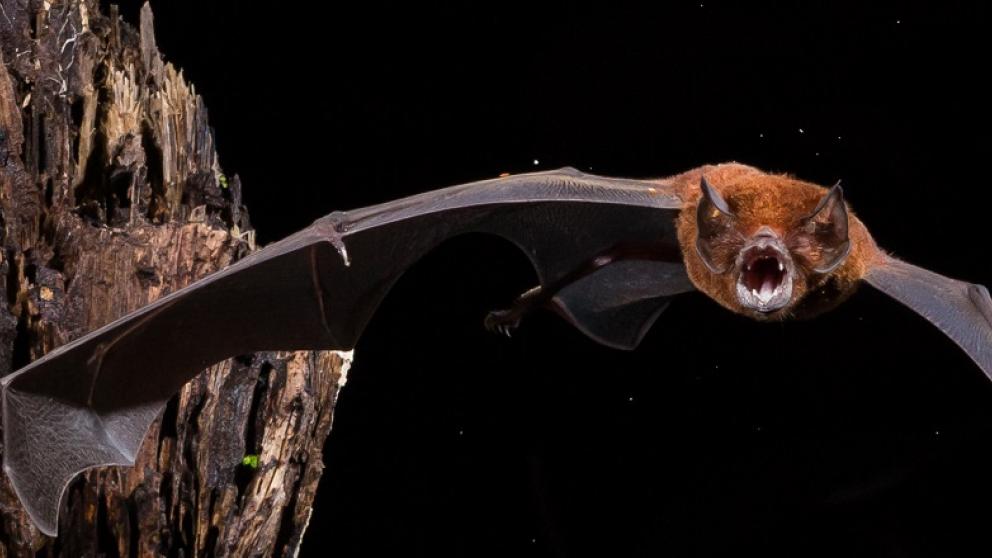Study shows bat species can thrive in regenerated rainforest

TWO new studies have shown that bat populations can thrive in regenerated rainforest, but the experts behind the research have warned that such forest needs to be given time to mature.
The studies, led by the University of Salford and carried out in the central Amazon rainforest, suggest that 30-year-old regenerating secondary forest can reduce extinction pressure and has the capacity to support common species of insect-eating bats.
Both studies were carried out on areas of forest of different sizes (1, 10 and 100 hectares) which were isolated from old-growth, primary rainforest, to make way for cattle pastures. The cattle ranches soon became unproductive and were abandoned, and the fragments are now embedded in large areas of tall regrowth forest - secondary forest - which has been regenerating for over 30 years.
Using a unique acoustic dataset of over 500,000 calls, the international team of researchers set out to assess how the bat community responded to changes in their environment.
Sarah Rowley, of the University of Salford and a lead author on one of the studies, explained “all three facets of diversity we looked at exhibited degradation in the secondary forest matrix around the smallest fragments, an effect which became less pronounced with increasing fragment size.” From a land management and conservation perspective she highlighted that “it is important to preserve larger fragments of at least 100 ha in area to maintain bat populations in human-modified landscapes”.
According to Natalie Yoh, lead author of the second study, “activity levels between primary and old secondary forest were comparable for most species, however, we still found that forest specialist bats were susceptible to edge effects.” Yoh, who developed this work as part of her Masters thesis at Salford and who is currently a postdoctoral researcher at the Center for Sustainability and the Global Environment (SAGE), University of Wisconsin-Madison, USA, added: “in this study we found that advanced secondary forest adjacent to primary forest can help support common aerial insectivorous bats but in isolation, secondary forest may not be able to support the same diversity and abundance as primary forest”. Primary forest remains irreplaceable for supporting the whole bat assemblage, the authors conclude.
The two studies suggest that the bat population of the area could be approaching a point of recovery after 30 years of regeneration, with the advanced secondary forest buffering the pervasive effects of fragmentation. Both studies highlight the conservation value of secondary forests and the importance of retaining primary forest fragments of appropriate size to protect source populations within human-modified landscapes which are exposed to deforestation and fragmentation pressures.
“Regenerating forests are becoming more common in many tropical countries, however, their conservation value for wildlife critically hinges on our ability to ensure their long-term protection and prevent them from being cut down again quickly, which unfortunately is all too often the case”, explained Christoph Meyer, Reader in the School of Science, Engineering and Environment at Salford and senior author of both studies.
Brazil has a rich and diverse bat fauna, with over 180 known species. Over half of these are aerial-hawking bats, species which hunt their airborne insect prey in flight, and which until recently, have been largely excluded from bat studies because they require sampling via acoustic methods instead of the traditional mist netting approach.
For all press office enquiries please email communications@salford.ac.uk.
Share:
